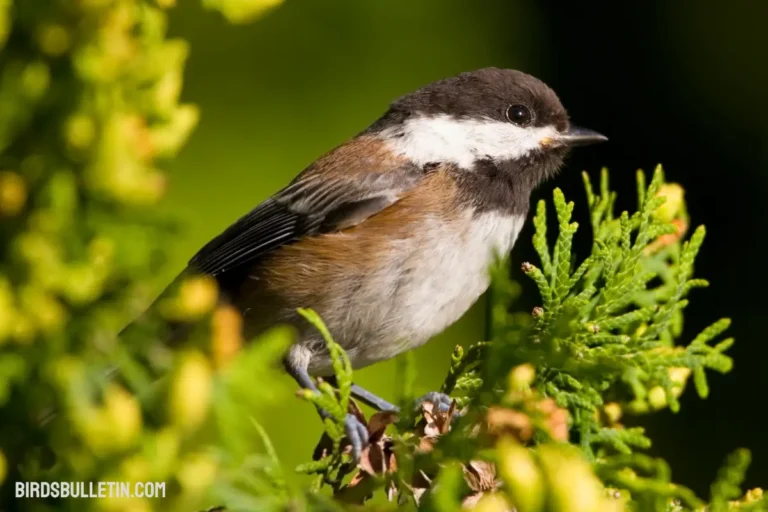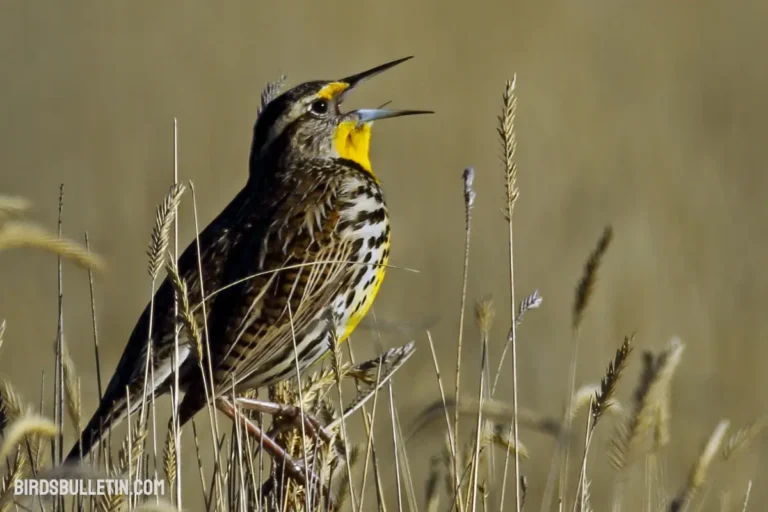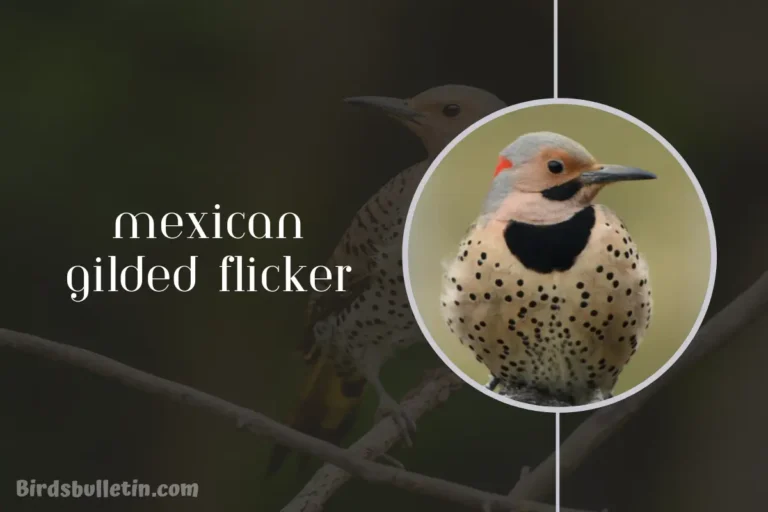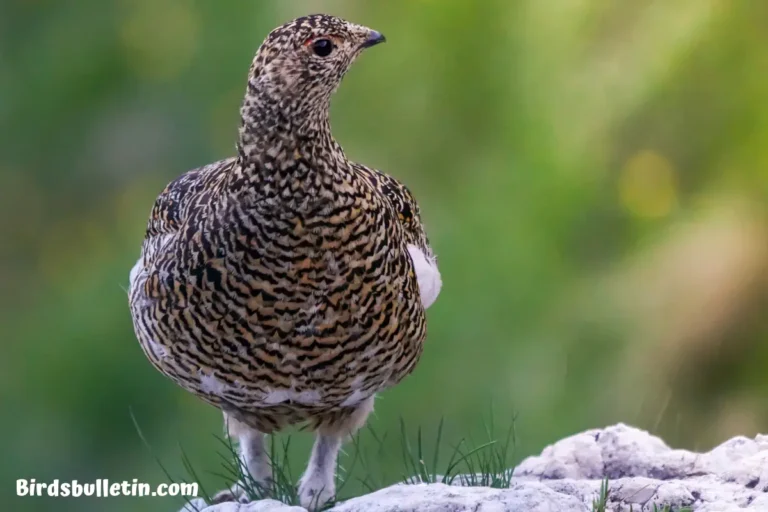What Do Western Meadowlarks Eat?
The Western Meadowlark is found across the prairies, plains, and farmlands of western North America. This bright yellow-breasted bird has adapted its diet and foraging strategies to take advantage of the seasonal abundance and variety of prey found in its open habitat.
In this article, we’ll take a closer look at the meadowlark’s diverse diet and feeding behaviors throughout the year.
Looking for more articles about birds’ food and diet:
An Overview of the Western Meadowlark’s Diet
This bird is considered an omnivorous ground-foraging bird, consuming a combination of insects, spiders, snails, and seeds depending on availability. Its diet varies across seasons and regions, adapting to prey abundance. Some key food sources include:
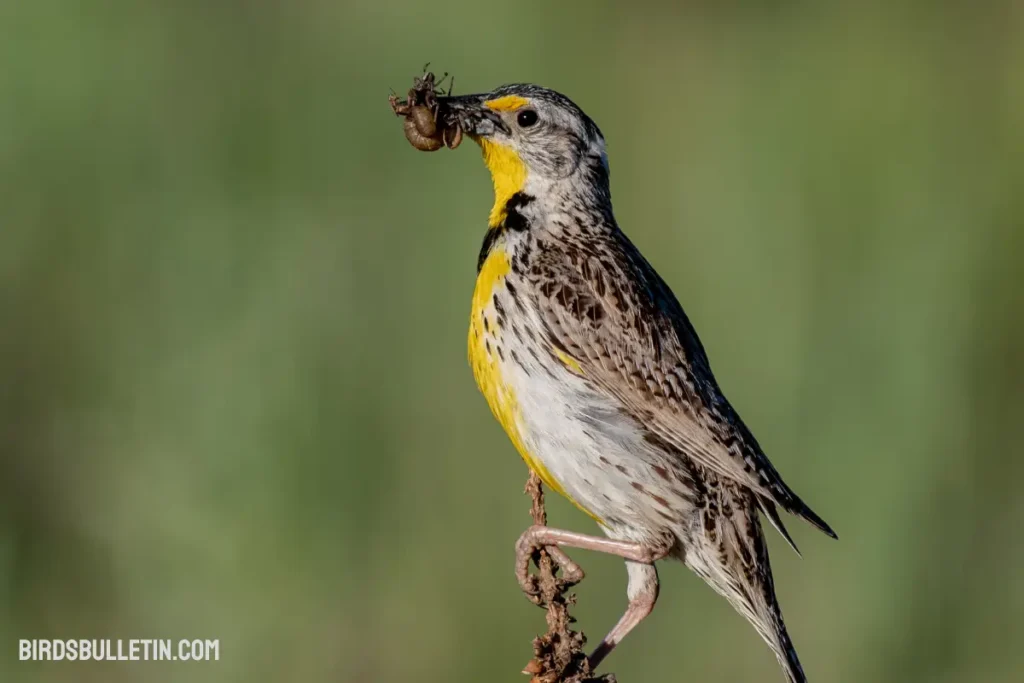
- Insects: beetles, grasshoppers, caterpillars, ants, wasps, flies
- Spiders
- Snails and slugs
- Seeds of weeds, grasses, crops
- Berries and fruits
Meadowlarks use their long-pointed bills to probe in the soil, leaf litter, and dense grass to uncover hidden prey. While foraging, they walk or run along the ground in an upright, erect posture scanning for food. Their sharply clawed feet help them scratch and uncover food sources.
Favorite Foods of the Western Meadowlark
Here are some of the Western Meadowlark’s favorite prey items by season in a table:
| Spring | Summer | Fall | Winter |
|---|---|---|---|
| Beetles | Grasshoppers | Grasshoppers | Weed seeds |
| Ants | Caterpillars | Beetles | Waste grains |
| Grasshoppers | Ants | Ants | Berries |
| Spider | Beetles | Spider | Insects |
| Seeds | Seeds | Seeds | Snails |
How Western Meadowlarks Gather Food?
Western Meadowlarks employ several key strategies and adaptations to locate and consume their prey:
- Foraging mostly on the ground by walking/running through fields using vision to spot prey. Sometimes they scratch through soil and grass to uncover hidden insects and seeds.
- Capturing insects by pursuit on the ground or by gleaning them from grass stems and foliage using their bills. They also snatch insects from the air.
- Rapidly eating smaller insects like ants and beetles. Larger prey is sometimes beaten against the ground to dismember and consume.
- Holding seeds with their feet and actively pecking or pounding them open with their bills to access the nutritious inner contents.
- They use their slender, pointed bills to probe deep into grass, soils, dung, or wood to locate and extract hidden insects and larvae.
- Occasionally picking berries and fruits directly from bushes and plants. More often they consume fruits that have fallen to the ground.
- Lowering their raised feather crests and puffing out plumage to enhance camouflage when slowly stalking prey.
Western Meadowlark Diet in Winter?
In winter, arthropod prey becomes scarcer for Western Meadowlarks. To compensate, they switch their diet during this season to focus more heavily on seeds from grasses, agricultural crops, and weeds.
These high-calorie seeds provide the fuel needed to survive cold periods.
Favored winter food sources include:
- Waste corn, wheat, oats, and other grains in agricultural fields
- Seeds from native grasses, sedges, and forbs
- Weed seeds from invasive plants like foxtails, pigweeds, and ragweeds
- Berries and fruits from shrubs and vines
- Snails and any other overwintering insects they can find
Foraging in large flocks during winter aids in locating and accessing enough of these essential food supplies. Harsher weather may force them to burrow into the snow for insulation to survive nights and storms.
Baby Western Meadowlark Diet
Western Meadowlark chicks hatch after an incubation period of about 14 days. The young birds grow rapidly and require a protein-rich diet provided by their parents for proper development.
For their first week, nestlings are fed insects almost exclusively, including caterpillars, grasshoppers, beetles, and spiders.
As the chicks grow, their diet is gradually supplemented with seeds. The parents feed the nestlings by regurgitating the food into their mouths. The chicks leave the nest at around 10-12 days old.
Then they continue begging their parents for another couple of weeks while they learn to forage independently. These juvenile birds start acquiring adult diet and foraging habits after a month old.
Frequently Asked Questions
01. How does the Western Meadowlark find food during the snowy months?
In winter they switch to eating more weed seeds, waste grains, and berries. Flocking behavior helps locate patchy food sources. They will burrow into the snow for insulation overnight.
02. What adaptations help the meadowlark capture and eat insects?
Specializations like their ground-running ability, sharp claws, erect posture, pointed bill, and cryptic plumage help them effectively find and capture insect prey.
03. How do they open hard seeds to access the inner contents?
The meadowlark holds seeds with its feet and cracks them open using its bill, sometimes pounding them against the ground as well. This gets at the nutritious insides.
04. Do the adults continue feeding their young after they leave the nest?
Yes, the parents will continue feeding the fledglings for a couple more weeks as they learn to forage on their own. The young beg and call to the parents to deliver food.
Final Thought
Throughout the year, Western Meadowlark adeptly varies its diet and foraging strategies to take advantage of the seasonal abundance of different food sources in its prairie habitat. Its diverse omnivorous diet provides the nutrition and energy these birds need for survival and song.
Maintaining healthy native and agricultural grassland habitats will be key to ensuring meadowlarks continue to grace our fields with their melodies for generations to come.
References
- Sibley, D. A. (2000). The Sibley Guide to Birds. Alfred A. Knopf.
- Kaufman, K. (2000). Lives of North American Birds. Houghton Mifflin Harcourt.
- National Audubon Society. (n.d.). Western Meadowlark. Retrieved from https://www.audubon.org/field-guide/bird/western-meadowlark.


